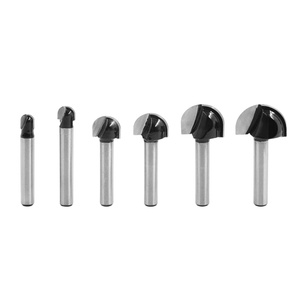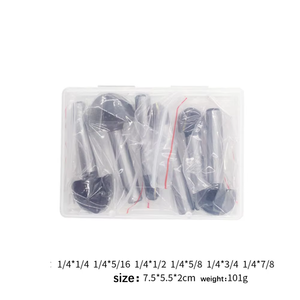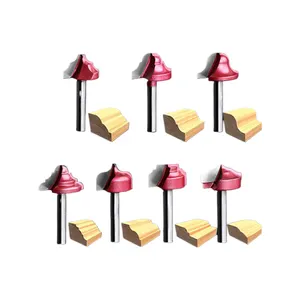(959 products available)












































































































































































































A half round cutter is a woodworking hand tool that is used to trim, shape, or smooth curved surfaces on wood, especially concave areas. It is widely used in the woodworking industry. Based on different factors, half-round wood cutters can be classified into various types.
Based on materials
On the basis of materials, a half-round cutter can be either metal or plastic. Metal half-round cutters are usually made of high-quality stainless steel, carbon steel, etc. Their durability and sturdiness can ensure a long-lasting cutting performance. They are not easily worn out or damaged. On the other hand, plastic half-circular cutters are lightweight, making them easier to operate and control. Besides, they are moisture-resistant and rust-resistant, which can be suitable for some specific environments.
By handle design
Based on the handle design, half cutters can be categorized into ergonomics handles and traditional handles. Half-round cutters with ergonomic handles are more comfortable and controllable, allowing users to exert more force and lessen fatigue during extended use. They are also more suitable for complex or delicate tasks that require precision. On the contrary, traditional-handled half-round cutters offer a sense of authenticity and tradition. They are the direct descendants of the tools used by our ancestors, connecting us to the craftsmanship of the past.
The specifications of a half round cutters vary depending on the material and the intended use. Here are some standard specifications.
The half round cutter is a versatile tool in various woodworking and metalworking industries. Its numerous applications make it an essential fixture for any workshop.
When choosing which types of half round cutters to stock, it is crucial to prioritize high-quality products. Select half round cutters manufactured from resilient materials, such as high-carbon steel, that can withstand significant wear and maintain their shape over time. It is also essential to consider the build quality of the product. Quality construction, precisely ground cutting edges, and seamless jointing between the handle and blade are important features to look out for.
When choosing which half round cutters to purchase, it is essential to consider the tool's size and weight. Stock half round cutters of varying sizes so that customers have an option to choose from depending on their intended use and preferences. In this case, branching out to different variations is a good idea. Aside from stocking up on the typical half round cutters, also consider stocking up on specialized variants such as the larger or narrower variants. Large half round cutters are usually used to cut thicker materials, while the smaller variant is more focused on precision and intricate work.
Consider the maximum supplier order quantity and the total volume it would take to fulfill this order when determining potential profit margins. Conduct an inventory turnover analysis and consider half round cutters that are more popular and frequent sales. In this case, it would be more beneficial to stock up on aggregate orders of half round cutters that sell more than those that are less popular even if they are a little more expensive.
Lastly, consider the aesthetic appeal of the half round cutter. While performance is the top priority, many customers appreciate tools that look good. Choose tools with attractive finishes and colors that will make them stand out and catch the attention of potential customers.
Q1: What are the advantages of using a half round cutter?
A1: The advantages of using a half-round cutter include achieving greater accuracy, providing access to tighter spaces, increasing productivity, and reducing operator fatigue.
Q2: What materials can be used with half-round cutters?
A2: A half-round wood cutter is designed to work with wood materials. On the other hand, metal half cutters are intended for use on metals. More specifically, on softer metals such as aluminum, brass, copper, carbon steel, and sheet metal. For harder metals like stainless steel, it is ideal to use specialized industrial machines.
Q3: Are half-round cutters difficult to operate?
A3: No, half-round cutters are not difficult to operate. Once the material is secured and marked, operators must make slow and steady cuts and follow the contours of the material. However, depending on the size of the cutter.
Q4: Can half-round cutters be used for materials other than wood and metal?
A4: Yes. Half-round cutters can cut other materials such as plastic, acrylic, and laminate materials. Depending on the material's hardness, one may have to use a different type of half-round cutter.